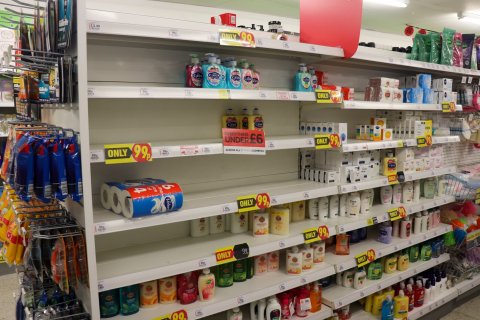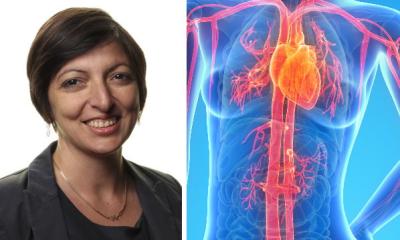Article • Public health
The fight against COVID-19 in the United Kingdom
The sunny Sunday of March 22, 2020, may well go down as a watershed date in the context of Coronavirus in the UK.
Report: Mark Nicholls
A couple of days earlier, UK schools had closed en masse – open only thereafter for children of key workers – and the British government had advised that pubs, bars, cinemas, gyms and restaurants should close and people should adhere more rigorously to social distancing. Members of the public were told that they should stay at home unless absolutely necessary and stop panic buying at the supermarket. However, it was advice that large swathes of the population ignored, behaving instead as though the lack of access to indoor recreation and leisure was a licence to head to outdoor tourist hotspots.
And they did so in their hordes: the Snowdonia National Park in Wales saw its busiest visitor day ever; inner city parks, particularly in London, were heaving with little concern for social distancing; and those with camper vans and caravans thought they could head off to remote parts of the UK such as the Scottish Highlands – blissfully ignorant of the fact that they could be taking Coronavirus with them.
Recommended article

Article • COVID-19 in the UK: an update
UK goes into 'controlled lockdown', Boris Johnson infected
As the United Kingdom enters its third week of lockdown and the battle against COVID-19 continues, the country’s health and care services are facing an ever-growing number of patients with the condition. The hospital-recorded death toll sat at 5,373 on April 6, up by 439 from 4,934 the previous day, with a total of 51,608 (up 3,802) confirmed cases reported. That compared with 5,683 cases of…
More intensive, and socially disruptive interventions will therefore be required to suppress transmission to low levels
Neil Ferguson
Britain had faced criticism that it has acted too slowly in endeavouring to balance a public health crisis with societal demands; concerns over adverse effects of social distancing and a sense of isolation, loneliness, and access to health services – particularly for the elderly – had led to a stance that social distancing should be delayed as long as possible. It sat with the UK government’s initial approach of attempting to slow and suppress the spread of Coronavirus and that a way out of the epidemic was to get to 60% or more of the population recovered from infection and deliver “herd immunity.”
However, subsequent analysis from a team modelling the spread and impact of COVID-19 – and suggestions that the UK was some two or three weeks behind Italy in the Coronavirus cycle - indicated that this tack would not stop the NHS from being overwhelmed and that more stringent methods were needed. The findings were from the WHO Collaborating Centre for Infectious Disease Modelling within the MRC Centre for Global Infectious Disease Analysis, J-IDEA, Imperial College London.
Professor Neil Ferguson, head of the MRC GIDA team, said: “We use the latest estimates of severity to show that policy strategies which aim to mitigate the epidemic might halve deaths and reduce peak healthcare demand by two-thirds, but that this will not be enough to prevent health systems being overwhelmed. More intensive, and socially disruptive interventions will therefore be required to suppress transmission to low levels. It is likely such measures – most notably, large scale social distancing – will need to be in place for many months, perhaps until a vaccine becomes available.” This had seen the government adopt a more stringent approach though one not enforced by law, although mass gatherings were banned and sporting fixtures postponed.

Image source: Vauxford, Depleted shop shelf at Savers, CC BY-SA 4.0
Panic buying in supermarkets – though not dissimilar to that seen in other countries – remained commonplace, though now with restrictions introduced with specific opening slots for health workers and the elderly. Unfortunately, at other times, the boorish behaviour in supermarkets and the recklessness of those still socialising, were also overshadowing the many random acts of kindness and neighbourly support taking place across the UK.
With Prime Minister Boris Johnson, flanked by senior medical officers, giving daily updates, the post-weekend message from government was clear: if people did not adhere to the advice, more draconian restrictions would come into effect. And, consequently, those more severe restrictions duly came into effect late on the evening of March 23 with the government saying people must stay at home, apart from shopping for food and vital supplies, medical needs, limited exercise or to go to work as a key worker. Gatherings of more than two people in public were banned with the police empowered to enforce these rulings. Non-essential food outlets also had to close.
Recommended article

News • COVID-19 status
Whole genome sequencing to map coronavirus spread
The Government and the UK’s Chief Scientific Adviser have backed the UK’s leading clinicians and scientists to map how COVID-19 spreads and behaves by using whole genome sequencing. Through a £20 million investment, the consortium will look for breakthroughs that help the UK respond to this and future pandemics, and save lives. COVID-19 Genomics UK Consortium - comprised of the NHS, Public…
While not yet in total lockdown – as in Italy, Spain and other countries – there was sense of foreboding that in the UK that was not far away and that the behaviour of some parts of the population in ignoring the advice of self-distancing would only exacerbate the move to lockdown. Inevitably, those more severe restrictions of when people can and cannot leave their homes, were announced by the British Prime Minister, but still without moving to a full lockdown. The medical backdrop to the Coronavirus crisis in the UK was one of a shortage of hand sanitisers and ventilators with companies – including alcohol distillers – switching to produce hand sanitisers, while other manufacturers modified production lines to make ventilators.
Meanwhile, Coronavirus cases – and deaths – in the UK began to rise as NHS staff worked tirelessly to stem the spread of COVID-19 and treat people who had contracted it. There were shortages of personal protective equipment and masks for health professionals, as well as a lack of testing for health NHS staff, though the government emphasised it was working to address that.
While Britain was also slow to test people, by March 23, there had been 70,000 people tested in the UK for the disease. In addition, non-essential surgery has been postponed for three months from April 15 to free up 30,000 of Britain’s 100,000 hospital beds. And this week, the NHS is contacting 1.5 million of the most at risk in society – those with certain cancers, low-immunity and transplant patients – and asking them to stay at home for 12 weeks. Government advice remains that anyone with a fever or a persistent cough should self-isolate for seven days and those living with these persons should self-isolate for 14 days.
As cases rose, retired health professionals were contacted and asked to return to the NHS; GP surgeries closed with consultations moving online or via video link; and medical students saw their exams cancelled and them being provisionally licensed to practice. The UK government had earlier unveiled billions of pounds worth of financial support, tax and rate relief measures, and loans to support businesses – notably in the hospitality sector which has closed completely – to help the economy.
With growing emphasis on social distancing, and anger at those flouting this advice, the UK began to move towards further closedown with more retail outlets shutting. More people were working from home, restaurants switched to takeaway or home delivery and, popular outlet chains such as McDonald’s restaurants closed completely from 7pm on March 23. In another step in the UK, the government and scientific community backed a new genome sequencing consortium to map how COVID-19 spreads and behaves by using whole genome sequencing.
Supported by a £20 million investment, the COVID-19 Genomics UK Consortium – comprised of the NHS, Public Health Agencies, Wellcome Sanger Institute, and numerous academic institutions – will deliver large scale, rapid sequencing of the cause of the disease and share intelligence with hospitals, regional NHS centres and the government.
And then, among a growing proportion of the population, one telling statistic seemed to gain traction. Coronavirus first came to the UK in late January and the first death was on March 5. By Sunday, March 22, the UK had seen 5,683 cases of Coronavirus and 281 deaths. The figure was very similar to that of Italy two weeks earlier, which on March 7 had 5,883 cases and 233 deaths. By March 22, Italy had 59,138 infections and 5476 deaths as experts and politicians across Britain became increasingly concerned that the UK may be on a similar Coronavirus trajectory.
*Figures correct at the time to writing, but subject to constant daily change.
24.03.2020







